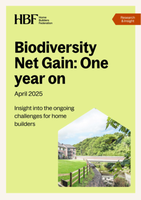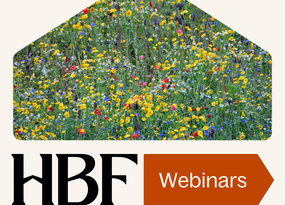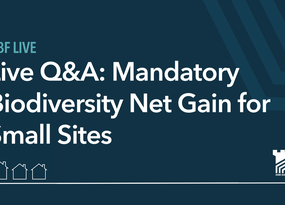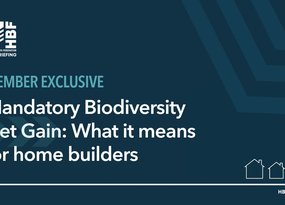Government's Biodiversity Net Gain (BNG) mandate came into force for major sites on Monday 12 February and small sites on Tuesday 2 April 2024, requiring a minimum of 10% BNG on new developments in England.
BNG questions answered
Biodiversity Net Gain (BNG) is now a lawful part of the planning system. Planning applications need to set out how a minimum of 10% BNG will be delivered and secured for at least 30 years.
Whilst BNG presents some operational challenges, certainly in the short-term, it has largely been welcomed as a positive step for wildlife and an opportunity for housebuilders to demonstrate that new homes and environment benefits can be delivered together.
Biodiversity net gain became mandatory for major sites on 12 February 2024 and small sites on 2 April 2024.
BNG requirements do not apply to applications submitted before these dates or to reserved matters pursuant to approved outline applications (where the outline was approved prior to 12 February 2024).
There are exemptions from the BNG requirements that apply to some applications.
The Planning Advisory Service (PAS) has been working with LPAs to help prepare them for the implementation of BNG. PAS has published a range of FAQs to further support LPAs.
In addition to this, PAS has developed ‘toolkit’ videos to support BNG preparation.
BNG is calculated using statutory biodiversity metric and delivered in accordance with a BNG Plan.
Planning applications for major sites submitted after 12 February 2024 - or 2 April for small sites - will need to use the latest version of statutory metric, transferring into it any information from previous versions that may have been used during pre-application preparation. DEFRA has provided advice on how to do this.
The national statutory metric considers not only the type of the biodiversity asset, but also its condition and rarity.
The metric requires any lost biodiversity to be replaced with either a like-for-like asset(s) or one of a better quality. It is not possible to ‘trade down’.
The metric also incentivises the implementation of BNG closest to the site, through the multipliers applied to off-site provision and the deliberately high cost of statutory credits.
There is a small site metric (SSM) which can be used to calculate biodiversity value for the purposes of biodiversity net gain for ‘small sites’. Small sites are defined as having one to nine dwellings or, if the number of dwellings is unknown, the total site area is less than 1 hectare.
However, there are a number of exceptions to using the small site metric and it can only be used when BNG is being delivered on-site.
The statutory biodiversity metric must be completed by an ecologist.
The small site metric (SSM) must be completed by a ‘competent person’, but this does not have to be an ecologist.
The SSM does not include an off-site site. It can be used to calculate on-site gains. If any off-site units are required, the Biodiversity Gain Plan will need to summarise how the BNG requirement has been met. The SSM must be completed by a ‘competent person’, but this does not have to be an ecologist.
It is important that BNG is considered at the earliest opportunity.
Although technically BNG is a post-development condition, and a BNG Plan can only be submitted and approved after planning permission has been granted, early discussions around BNG and the sharing of a draft BNG Plan with a Local Planning Authority (LPA) is very much encouraged.
Major applications submitted after 12 February 2024 and applications for small sites made from 2 April 2024 will need to either include a statement that the application is not subject to mandatory BNG and the reasons why not (i.e. which of the exemptions applies), or a statement that the application is subject to mandatory BNG, accompanied by:
- the completed metric tool(s) showing the onsite habit score as of the date of the application or an earlier agreed date;
- if any habitat degradation has occurred, the completed metric for before the degradation occurred;
- the score in biodiversity units;
- the publication date of the version of the metric being used (the current version's publication date is 29 November 2023);
- if any earlier calculation date has been agreed, why it was proposed
- if any degradation has occurred, a statement that it has occurred, when it started and any evidence for the date it started and the score before the degradation; and
- a description of any irreplaceable habitat within the red line boundary as of the metric calculation date; and a scale plan of the onsite habitat used in the calculations and any irreplaceable habitat.
Degradation in the context of BNG is the process of reducing the biodiversity of a habitat in order to lower the biodiversity metric scores before development.
BNG guidance discourages the deliberate degradation.
If any on-site score-lowering activity that is not part of implementing a planning permission has taken place since 30 January 2020, or that is part of a not-yet-fully-implemented planning permission has taken place since 25 August 2023, then it is to be ignored.
The score is the highest score that can be assumed before that happened and must be reasonably supported by evidence.
The BNG mitigation hierarchy seeks in the first instance to minimise biodiversity loss, but where net gain is required the process allows for on-site biodiversity, off-site biodiversity (which must be registered) and, as a last resort, the purchase of statutory credits.
The regulations set out a 'biodiversity gain hierarchy' of the preferred order of steps that should be followed, which are as follows:
- Avoid impacts on onsite habitats of distinctiveness at least;
- Mitigate impacts on such habitats;
- Compensate through enhancement of onsite habitat;
- Compensate through creation of onsite habitat;
- Compensate through allocation of offsite habitat; and
- Purchase biodiversity credits.
If a developer is able to show that BNG on-site delivery is not desirable and/or deliverable, and that there is no off-site provision available, statutory BNG credits can be purchased.
On-site provision should be explored in the first instance, but there will be instances when on-site BNG is neither possible or desirable. This could relate to site-specific deliverability or suitable, or opportunities (perhaps by way of a Local Nature Recovery Strategy) to coordinate off-site contributions from a number of sites.
If BNG is provided off-site its value in units for a development may be reduced, depending how far away it is.
The basic rule is that if the off-site land is anywhere in the same local authority area (district or unitary level) or 'National Character Area (NCA)' then the score does not change.
If though it is in an adjacent local authority or NCA, the score is multiplied by 3/4, and if it is anywhere else in England, it is multiplied by 1/2. So if you are losing four units through the development, you will need to find at least 4.4 units in the same local authority or NCA, 5.87 units in a neighbouring one, or 8.8 units anywhere else.
The regulations state that the BNG Plan (that must be approved before development can commence) must give reasons for not following the order of priority.
Government's updated Planning Practice Guidance for biodiversity net gain, published on 14 March 2024, includes detailed guidance on how BNG is intended to work for phased developments.
BNG can be delivered via either a Section 106 Agreement or through a Conservation Covenant with a ‘Responsible Body’.
The responsibility for BNG deliver is for the planning applicant to set out in the BNG statement and agree with the Council.
The responsibility of on-site BNG should be set out in a legal agreement.
It is possible to buy off-site units from a land manager, the land manager would then be responsible for delivering the BNG in accordance with their legal agreement.
It is also possible to make off-site gains on land owned by a developer outside the development site. A legal agreement would need to be in place to secure management of the land for the required 30 years.
As the market for off-site BNG credits is still emerging costs are not fully known at this time.
The costs of statutory credits has been set out on GOV.uk.
It is worth noting the figures outlined by government are set at a high price to encourage on-site and off-site delivery, rather than a reliance on the national credit scheme.
The market for off-site biodiversity provision is still emerging and habitat banks are not yet in place across the whole country.
Future Homes Hub hosts a BNG Unit Finder Map to help match sellers of BNG units with potential buyers.
On-site gains must last for at least 30 years from the date of completion of the whole development.
Off-site gains must last for at least 30 years from the date the habitat enhancement is finished.
A local plan policy that sought to, for example, ensure that all BNG to be secured was on land within a LPA’s administrative boundary would be unsound and not reflective of how the BNG is expected to work in practice.
Moving forward Local Plan should link into Local Nature Recovery Strategies, as these are prepared.
Natural England operates a national register for net gain delivery sites and all sites that are being used to deliver off-site BNG must be registered on it.
A site-specific viability assessments could though show the impact of BNG on a scheme’s ability to provide other planning gain contributions.
Planning applications where BNG is an issue can be appealed in the usual way.
It is possible to appeal a refusal of a BNG plan, and to appeal for non-determination of the Biodiversity Gain Plan if a decision is not made within 8 weeks, or an agreed extended deadline.
Some LPAs already have a BNG policy in an adopted local plan. Where these refer simply to no net loss of biodiversity they will be superseded by the national mandatory requirement.
Some LPAs, Guildford and Cornwall, for example, have policies seeking 20% BNG.
HBF is arguing that any policy looking to go beyond 10% mandatory BNG needs to be robustly evidenced and the costs specifically identified and included within a viability assessment of the whole plan.
Where there is no policy the national requirement will be applied from the relevant date.
HBF's BNG asks
1. Ensure LPAs are sufficiently staffed and placed on a sustainable financial footing, with a strategy to address the recruitment crisis for ecologists.
2. Make sure small local habitat banks are available at a reasonable cost for SME home builders.
3. Increase the size threshold for BNG to ensure that small sites, which are disproportionately expensive to provide BNG on, are not rendered unviable.
4. Confirm that the 10% BNG system is fully functioning, nationally, before LPAs go any further.
5. Require local plans to include a baseline BNG assessment as part of the site allocation process to provide greater certainty.
6. Ensure Local Nature Recovery Strategies and local plans work together to support off-site delivery and provide confidence about its locations.
7. Stop LPAs from producing Supplementary Planning Documents (SPDs) on BNG and instead get them all to refer to the national guidance which is already very extensive.
8. Provide further clarity on certain aspects of BNG, including:
- The circumstances in which moving down the BNG delivery hierarchy from on-site to off-site is acceptable, especially where this will deliver more and/or better ecological outcomes.
- The interaction of BNG with plan-making.
- Whether on-site gains need to be secured through Section 106 agreements or planning conditions.
- The calculation of qualitative factors including the condition, distinctiveness and connectivity of habitats.
- Clarity in local plans that sites delivering off-site BNG are acceptable in principle in Green Wedges and Green Belt.
9. Develop a Quality Mark for off-site BNG credits, so builders can have confidence in what they are buying.
10. Ensure the statutory credits systems can deliver BNG benefits, so schemes that rely on them can have confidence that they will deliver the required BNG.
For more on HBF's BNG asks, read our report 'BNG: One Year On':
HBF BNG webinars on demand
In addition to our FAQs, HBF has delivered webinars with Natural England and Defra to help respond to the industry's questions.
Mandatory Biodiversity Net Gain resources
Restricted Content
To access resources related to BNG please sign in to your free HBF account using your work email address. If you haven't yet set up your account but are part of a HBF member organisation you can create an account using your work email address.
Explore the benefits of HBF membership today.
Login
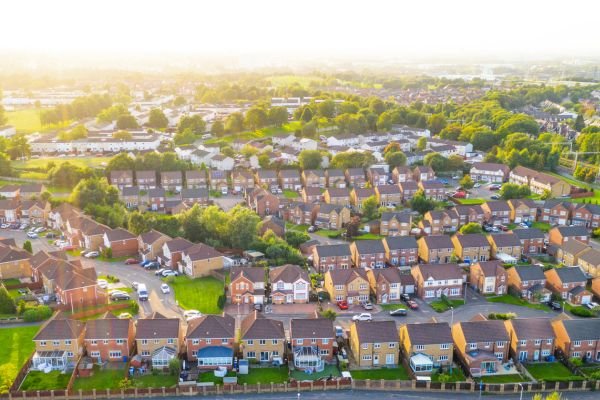
Got a question about the biodiversity net gain requirements?
Submit our form and a member of the team will get back to you
Submit your question

Got a question about the biodiversity net gain requirements?
Submit our form and a member of the team will get back to you
Submit your question
